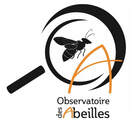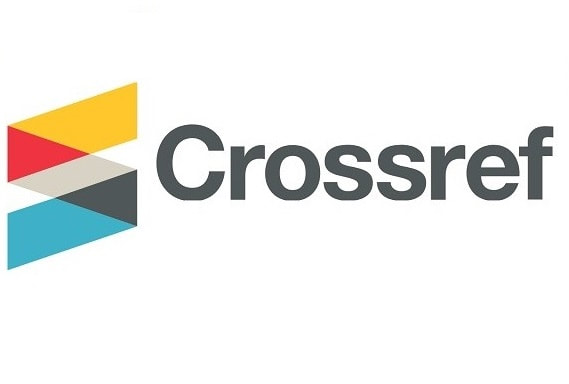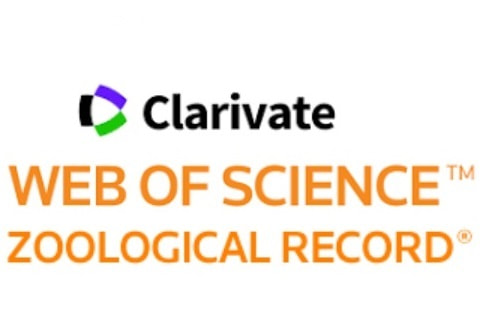Revue d'Hyménoptérologie
Journal of Hymenopterology
ISSN 2727-3806
ARTICLE |
Monitoring of parasites in bumblebee colonies developed from controlled nesting of wild queens (Hymenoptera: Apidae: Bombus)
|
Antoine Gekière, Jean Habay, Denis Michez
|
Citation
Gekière, A., J. Habay & D. Michez (2022). Monitoring of parasites in bumblebee colonies developed from controlled nesting of wild queens (Hymenoptera: Apidae: Bombus). Osmia, 10: 45–54. https://doi.org/10.47446/OSMIA10.5
Received 06 December 2021 - Accepted 25 August 2022 - Published (online) 31 August 2022
Indexation • Archivage - Archiving
Abstract
Bumblebees (Apidae: Bombus spp.) are a major group of wild and domesticated bees that provide crucial ecosystem services through wildflower and crop pollination. However, most of bee populations, including bumblebees, are declining worldwide, partly because of parasite spill-over and spill-back between bumblebee commercial colonies and wild populations. Breeders have to cope with invasions by a vast array of bumblebees’ parasites, and techniques need to be developed to prevent such invasions to support breeders and wild bee populations. Our 10-year study is based on 327 nests of seven bumblebee species (B. humilis, B. hypnorum, B. lapidarius, B. lucorum, B. pascuorum, B. sylvarum, B. terrestris) reared in outdoor boxes. Some boxes were equipped with parasite-preventing techniques, namely (i) an airlock (n = 2) or (ii) an additional chamber with natural fragrances (n = 74). We recorded the invasion of the nests by the wax moth Aphomia sociella, the eulophid Melittobia acasta and the cuckoo bumblebees Bombus subgenus Psithyrus spp. Overall, 8.26 %, 1.53 % and 3.67 % of the colonies were invaded by A. sociella, M. acasta and Psithyrus spp., respectively, without coinfection. Neither the airlock nor the additional chamber with natural fragrances prevented A. sociella infestation. Despite that no nest equipped with an airlock or an additional chamber with natural fragrances was invaded by M. acasta or Psithyrus spp., we lacked replicates to properly demonstrate the efficiency of these techniques. Nest inspection remains a time-consuming but powerful technique to reduce artificial nest spoilage by parasites, yet it is inefficient against tiny invaders (< 1 mm) that are left unnoticed. We therefore encourage further studies to actively seek for parasite-preventing techniques to reduce artificial nest spoilage and to mitigate spill-over towards wild populations.
Keywords
Aphomia sociella, Melittobia acasta, Psithyrus spp., Bombus spp., parasite-preventing techniques
Titre (traduction)
Surveillance des parasites dans les colonies de bourdons issues de la nidification contrôlée de reines sauvages (Hymenoptera : Apidae : Bombus)
Résumé
Les bourdons (Apidae : Bombus spp.) représentent un groupe important d’abeilles sauvages et domestiquées qui fournissent des services écosystémiques cruciaux à travers la pollinisation de fleurs sauvages et de cultures. Toutefois, la plupart des populations d’abeilles, bourdons inclus, sont en déclin à l’échelle mondiale, en partie à cause du transfert de parasites entre les colonies domestiquées de bourdons et les populations sauvages. Les éleveurs doivent faire face à l’invasion de nombreux parasites de bourdons, et des techniques doivent être développées pour empêcher de telles invasions afin de soutenir les éleveurs et protéger les populations d’abeilles sauvages. Notre étude s’étend sur 10 ans et se base sur 327 colonies de sept espèces de bourdons (B. humilis, B. hypnorum, B. lapidarius, B. lucorum, B. pascuorum, B. sylvarum et B. terrestris) élevées dans des boîtes placées à l’extérieur. Certaines boites étaient équipées de mécanismes permettant d’empêcher l’invasion de parasites, à savoir (i) un sas (n = 2) ou (ii) une chambre additionnelle avec des odeurs naturelles (n = 74). Nous avons enregistré l’invasion de ces colonies par la pyrale du bourdon Aphomia sociella, l’eulophide Melittobia acasta et les bourdons cleptoparasites Bombus sous-genre Psithyrus spp. Au total, 8,26 %, 1,53 % et 3,67 % des colonies furent envahies par A. sociella, M. acasta et Psithyrus spp., respectivement, sans trace de co-infection. Ni l’utilisation du sas ni l’utilisation d’une chambre additionnelle avec des odeurs naturelles n’ont empêché l’invasion par A. sociella. Bien qu’aucune des colonies équipées d’un sas ou d’une chambre additionnelle avec des odeurs naturelles n’ait été envahie par M. acasta ou Psithyrus spp., nous manquons de réplicas pour démontrer l’efficacité significative de ces techniques. L’inspection des colonies reste une technique chronophage mais efficace pour réduire la perte de colonies domestiques par des parasites, quoique cette méthode reste inefficace face aux petits envahisseurs (< 1 mm) qui ne peuvent être remarqués. Nous encourageons ainsi de futures études à chercher activement des techniques pour faire face aux parasites afin de réduire la perte de colonies domestiques et atténuer le transfert de parasites vers les populations sauvages.
Mots-clefs
Aphomia sociella, Melittobia acasta, Psithyrus spp., Bombus spp., techniques préventives contre les parasites
References
Gekière, A., J. Habay & D. Michez (2022). Monitoring of parasites in bumblebee colonies developed from controlled nesting of wild queens (Hymenoptera: Apidae: Bombus). Osmia, 10: 45–54. https://doi.org/10.47446/OSMIA10.5
Received 06 December 2021 - Accepted 25 August 2022 - Published (online) 31 August 2022
Indexation • Archivage - Archiving
- DOI: https://doi.org/10.47446/OSMIA10.5
- Zoobank (ICZN): https://zoobank.org/C5C00473-CD4B-4784-913B-F1952579D493
- HAL (CNRS-INRAE): https://hal.archives-ouvertes.fr/hal-03765209
- Zenodo (CERN): https://zenodo.org/record/7036358
Abstract
Bumblebees (Apidae: Bombus spp.) are a major group of wild and domesticated bees that provide crucial ecosystem services through wildflower and crop pollination. However, most of bee populations, including bumblebees, are declining worldwide, partly because of parasite spill-over and spill-back between bumblebee commercial colonies and wild populations. Breeders have to cope with invasions by a vast array of bumblebees’ parasites, and techniques need to be developed to prevent such invasions to support breeders and wild bee populations. Our 10-year study is based on 327 nests of seven bumblebee species (B. humilis, B. hypnorum, B. lapidarius, B. lucorum, B. pascuorum, B. sylvarum, B. terrestris) reared in outdoor boxes. Some boxes were equipped with parasite-preventing techniques, namely (i) an airlock (n = 2) or (ii) an additional chamber with natural fragrances (n = 74). We recorded the invasion of the nests by the wax moth Aphomia sociella, the eulophid Melittobia acasta and the cuckoo bumblebees Bombus subgenus Psithyrus spp. Overall, 8.26 %, 1.53 % and 3.67 % of the colonies were invaded by A. sociella, M. acasta and Psithyrus spp., respectively, without coinfection. Neither the airlock nor the additional chamber with natural fragrances prevented A. sociella infestation. Despite that no nest equipped with an airlock or an additional chamber with natural fragrances was invaded by M. acasta or Psithyrus spp., we lacked replicates to properly demonstrate the efficiency of these techniques. Nest inspection remains a time-consuming but powerful technique to reduce artificial nest spoilage by parasites, yet it is inefficient against tiny invaders (< 1 mm) that are left unnoticed. We therefore encourage further studies to actively seek for parasite-preventing techniques to reduce artificial nest spoilage and to mitigate spill-over towards wild populations.
Keywords
Aphomia sociella, Melittobia acasta, Psithyrus spp., Bombus spp., parasite-preventing techniques
Titre (traduction)
Surveillance des parasites dans les colonies de bourdons issues de la nidification contrôlée de reines sauvages (Hymenoptera : Apidae : Bombus)
Résumé
Les bourdons (Apidae : Bombus spp.) représentent un groupe important d’abeilles sauvages et domestiquées qui fournissent des services écosystémiques cruciaux à travers la pollinisation de fleurs sauvages et de cultures. Toutefois, la plupart des populations d’abeilles, bourdons inclus, sont en déclin à l’échelle mondiale, en partie à cause du transfert de parasites entre les colonies domestiquées de bourdons et les populations sauvages. Les éleveurs doivent faire face à l’invasion de nombreux parasites de bourdons, et des techniques doivent être développées pour empêcher de telles invasions afin de soutenir les éleveurs et protéger les populations d’abeilles sauvages. Notre étude s’étend sur 10 ans et se base sur 327 colonies de sept espèces de bourdons (B. humilis, B. hypnorum, B. lapidarius, B. lucorum, B. pascuorum, B. sylvarum et B. terrestris) élevées dans des boîtes placées à l’extérieur. Certaines boites étaient équipées de mécanismes permettant d’empêcher l’invasion de parasites, à savoir (i) un sas (n = 2) ou (ii) une chambre additionnelle avec des odeurs naturelles (n = 74). Nous avons enregistré l’invasion de ces colonies par la pyrale du bourdon Aphomia sociella, l’eulophide Melittobia acasta et les bourdons cleptoparasites Bombus sous-genre Psithyrus spp. Au total, 8,26 %, 1,53 % et 3,67 % des colonies furent envahies par A. sociella, M. acasta et Psithyrus spp., respectivement, sans trace de co-infection. Ni l’utilisation du sas ni l’utilisation d’une chambre additionnelle avec des odeurs naturelles n’ont empêché l’invasion par A. sociella. Bien qu’aucune des colonies équipées d’un sas ou d’une chambre additionnelle avec des odeurs naturelles n’ait été envahie par M. acasta ou Psithyrus spp., nous manquons de réplicas pour démontrer l’efficacité significative de ces techniques. L’inspection des colonies reste une technique chronophage mais efficace pour réduire la perte de colonies domestiques par des parasites, quoique cette méthode reste inefficace face aux petits envahisseurs (< 1 mm) qui ne peuvent être remarqués. Nous encourageons ainsi de futures études à chercher activement des techniques pour faire face aux parasites afin de réduire la perte de colonies domestiques et atténuer le transfert de parasites vers les populations sauvages.
Mots-clefs
Aphomia sociella, Melittobia acasta, Psithyrus spp., Bombus spp., techniques préventives contre les parasites
References
- Alford, D. V. (1975). Bumblebees. Davis-Poynter, London, 352 pp.
- Arbetman, M. P., G. Gleiser, C. L. Morales, P. Williams & M. A. Aizen (2017). Global decline of bumblebees is phylogenetically structured and inversely related to species range size and pathogen incidence. Proceedings of the Royal Society B, 284(1859): 20170204. http://doi.org/10.1098/rspb.2017.0204
- Ayasse, M. & S. Jarau (2014). Chemical Ecology of Bumble Bees. Annual Review of Entomology, 59(1): 299–319. https://doi.org/10.1146/annurev-ento-011613-161949
- Kumar, V., V. V. Belavadi & A. Gupta (2015). Parasitisation of leaf-cutter bees (Megachilidae: Apoidea) by Melittobia. Entomon, 40(2): 103-110. http://entomon.in/index.php/Entomon/article/view/69
- Benton, T. (2006). Bumblebees. Harper Collins, London, 589 pp.
- Cameron, S. A., H. C. Lim, J. D. Lozier, M. A. Duennes & R. Thorp (2016). Test of the invasive pathogen hypothesis of bumble bee decline in North America. Proceedings of the National Academy of Sciences, 113(16): 4386–4391. https://doi.org/10.1073/pnas.1525266113
- Cameron, S. A. & B. M. Sadd (2020). Global trends in bumble bee health. Annual Review of Entomology, 65: 209–232. https://doi.org/10.1146/annurev-ento-011118-111847
- Carvell, C., P. Rothery, R. F. Pywell & M. S. Heard (2008). Effects of resource availability and social parasite invasion on field colonies of Bombus terrestris. Ecological Entomology, 33(3): 321–327. https://doi.org/10.1111/j.1365-2311.2007.00961.x
- Colla, S. R., M. C. Otterstatter, R. J. Gegear & J. D. Thomson (2006). Plight of the bumble bee: Pathogen spillover from commercial to wild populations. Biological conservation, 129(4): 461–467. https://doi.org/10.1016/j.biocon.2005.11.013
- Dicks, L. V., T. D. Breeze, H. T. Ngo, D. Senapathi, J. An, M. A. Aizen, P. Basu, D. Buchori, L. Galetto, L. A. Garibaldi, B. Gemmill-Herren, B. G. Howlett, V. L. Imperatriz-Fonseca, S. D. Johnson, A. Kovács-Hostyánszki, Y. J. Kwon, H. M. G. Lattorff, T. Lungharwo, C. L. Seymour, A. J. Vanbergen & S. G. Potts (2021). A global-scale expert assessment of drivers and risks associated with pollinator decline. Nature Ecology & Evolution, 5: 1453–1461. https://doi.org/10.1038/s41559-021-01534-9
- Erler, S. & H. M. G. Lattorff (2010). The degree of parasitism of the bumblebee (Bombus terrestris) by cuckoo bumblebees (Bombus (Psithyrus) vestalis). Insectes Sociaux, 57(4): 371–377. https://doi.org/10.1007/s00040-010-0093-2
- Gervais, A., V. Fournier & M. Bélisle (2020). Agricultural landscape composition affects the development and life expectancy of colonies of Bombus impatiens. Ecosphere, 11(7): e03142. https://doi.org/10.1002/ecs2.3142
- Ghisbain, G., M. Gérard, T. J. Wood, H. M. Hines & D. Michez (2021). Expanding insect pollinators in the Anthropocene. Biological Reviews, 96(6): 2755–2770. https://doi.org/10.1111/brv.12777
- González, J. M., D. Camino, S. Simon & A. Cusumano (2018). Semiochemical Exploitation of Host-Associated Cues by Seven Melittobia Parasitoid Species: Behavioral and Phylogenetic Implications. Frontiers in Ecology and Evolution, 5: 172. https://doi.org/10.3389/fevo.2017.00172
- Goulson, D., W. Hughes, L. Derwent & J. C. Stout (2002). Colony growth of the bumblebee, Bombus terrestris, in improved and conventional agricultural and suburban habitats. Oecologia, 130(2): 267–273. https://doi.org/10.1007/s004420100803
- Goulson, D. (2003). Bumblebees: behaviour and ecology. Oxford University Press, Oxford (UK), 235 pp.
- Goulson, D., G. C. Lye & B. Darvill (2008). Decline and Conservation of Bumble Bees. Annual Review of Entomology, 53: 191–208. https://doi.org/10.1146/annurev.ento.53.103106.093454
- Goulson, D. & W. O. H. Hughes (2015). Mitigating the anthropogenic spread of bee parasites to protect wild pollinators. Biological Conservation, 191: 10–19. https://doi.org/10.1016/j.biocon.2015.06.023
- Goulson, D., E. Nicholls, C. Botías & E. L. Rotheray (2015). Bee declines driven by combined stress from parasites, pesticides, and lack of flowers. Science, 347(6229): 1255957. https://doi.org/10.1126/science.1255957
- Gouslon, D., S. O’Connor & K. J. Park (2018). The impacts of predators and parasites on wild bumblebee colonies. Ecological Entomology, 43(2): 168–181. https://doi.org/10.1111/een.12482
- Gubisch, J. (2021). Hummeltischler. Personal website, Germany. https://hummeltischler.de [accessed 06 December 2021]
- Hristov, P., B. Neov, R. Shumkova & N. Palova (2020). Significance of Apoidea as Main Pollinators. Ecological and Economic Impact and Implications for Human Nutrition. Diversity, 12(7): 280. https://doi.org/10.3390/d12070280
- Kindl, J., P. Jiroš, B. Kalinová, P. Žáček & I. Valterová (2012). Females of the Bumblebee Parasite, Aphomia sociella, Excite Males Using a Courtship Pheromone. Journal of Chemical Ecology, 38(4): 400–407. https://doi.org/10.1007/s10886-012-0100-3
- Kleijn, D., R. Winfree, I. Bartomeus, L. G. Carvalheiro, M. Henry, R. Isaacs, A.-M. Klein, C. Kremen, L. K. M'Gonigle, R. Rader, T. H. Ricketts, N. M. Williams, N. L. Adamson, J. S. Ascher, A. Báldi, P. Batáry, F. Benjamin, J. C. Biesmeijer, E. J. Blitzer, R. Bommarco, M. R. Brand, V. Bretagnolle, L. Button, D. P. Cariveau, R. Chifflet, J. F. Colville, B. N. Danforth, E. Elle, M. P. D. Garratt, F. Herzog, A. Holzschuh, B. G. Howlett, F. Jauker, S. Jha, E. Knop, K. M. Krewenka, V. Le Féon, Y. Mandelik, E. A. May, M. G. Park, G. Pisanty, M. Reemer, V. Riedinger, O. Rollin, M. Rundlöf , H. S. Sardiñas, J. Scheper, A. R. Sciligo, H. G. Smith, I. Steffan-Dewenter, R. Thorp, T. Tscharntke, J. Verhulst, B. F. Viana, B. E. Vaissière, R. Veldtman, K. L. Ward, C. Westphal & S. G. Potts (2015). Delivery of crop pollination services is an insufficient argument for wild pollinator conservation. Nature Communications, 6:7414. https://doi.org/10.1038/ncomms8414
- Klein, A. M., B. E. Vaissière, J. H. Cane, I. Steffan-Dewenter, S. A. Cunningham, C. Kremen & T. Tscharntke (2007). Importance of pollinators in changing landscapes for world crops. Proceedings of the Royal Society B, 274(1608): 303–313. http://doi.org/10.1098/rspb.2006.3721
- Kwon, Y. J., S. Saeed & M. J. Duchateau (2003). Control of Plodai interpunctella (Lepidoptera: Pyralidae), a pest in Bombus terrestris colonies. The Canadian Entomologist, 135(6): 893–902. http://doi.org/10.4039/n03-013
- Kwon, Y. J., M. R. Amin & N. S. L. Inn (2012). Morphological features, development and reproduction of Melittobia acasta on Bombus terrestris. Entomological Research, 42(2): 73–78. https://doi.org/10.1111/j.1748-5967.2011.00360.x
- Lhomme, P., M. Ayasse, I. Valterová, T. Lecocq & P. Rasmont (2015). A scent shield to survive: identification of the repellent compounds secreted by the male offspring of the cuckoo bumblebee Bombus vestalis. Entomologia Experimentalis et Applicata, 157(3): 263–270. https://doi.org/10.1111/eea.12366
- Lhomme, P. & H. M. Hines (2019). Ecology and Evolution of Cuckoo Bumble Bees. Annals of the Entomological Society of America, 112(3):122–140. https://doi.org/10.1093/aesa/say031
- Macfarlane, R. P. & P. J. Donovan (1989). Melittobia spp. as parasitoids of bumble and lucerne leafcutting bees and their control in New Zealand. Proceedings of the New Zealand Weed and Pest Control Conference, 42: 274–277. https://doi.org/10.30843/nzpp.1989.42.10978
- Macfarlane, R. P., J. J. Lipa & H. J. Liu (1995). Bumble Bee Pathogens and Internal Enemies. Bee World, 76(3): 130–148. https://doi.org/10.1080/0005772X.1995.11099259
- Martin, C. D., M. T. Fountain & M. J. F. Brown (2021). The potential for parasite spill-back from commercial bumblebee colonies: a neglected threat to wild bees? Journal of Insect Conservation, 25(3): 531–539. https://doi.org/10.1007/s10841-021-00322-x
- Matthews, R. W., J. M. González, J. R. Matthews & L. D. Deyrup (2009). Biology of the parasitoid Melittobia (Hymenoptera: Eulophidae). Annual Review of Entomology, 54: 251–266. https://doi.org/10.1146/annurev.ento.54.110807.090440
- Michez, D., P. Rasmont, M. Terzo & N. J. Vereecken (2019). Bees of Europe. NAP, Verrières-le-Buisson (F), 548 pp.
- Meeus, I., M. J. F. Brown, D. C. De Graaf & G. Smagghe (2011). Effects of invasive parasites on bumble bee declines. Conservation Biology, 25(4): 662–671. http://doi.org/10.1111/j.1523-1739.2011.01707.x
- Müller, C. B. & P. Schmid-Hempel (1992). Correlates of reproductive success among field colonies of Bombus lucorum: the importance of growth and parasites. Ecological Entomology, 17(4): 343–353. http://doi.org/10.1111/j.1365-2311.1992.tb01068.x
- O’Connor, S. A. (2013). The Nesting Ecology of Bumblebees. PhD Thesis, The University of Stirling (UK), 248 pp. https://core.ac.uk/download/pdf/20443717.pdf [accessed 06 December 2021]
- Ollerton, J., R. Winfree & S. Tarrant (2011). How many flowering plants are pollinated by animals? Oikos, 120(3): 321–326. https://doi.org/10.1111/j.1600-0706.2010.18644.x
- Osterman, J., M. A. Aizen, J. C. Biesmeijer, J. Bosch, B. G. Howlett, D. W. Inouye, C. Jung, D. J. Martins, R. Medel, A. Pauw, C. L. Seymour & R. J. Paxton (2021). Global trends in the number and diversity of managed pollinator species. Agriculture, Ecosystems & Environment, 322: 107653. https://doi.org/10.1016/j.agee.2021.107653
- Otterstatter, M. C. & J. D. Thomson (2008). Does Pathogen Spillover from Commercially Reared Bumble Bees Threaten Wild Pollinators? PLoS ONE, 3(7): e2771. https://doi.org/10.1371/journal.pone.0002771
- Owen, R. (2016). Rearing Bumble Bees for Research and Profit: Practical and Ethical Considerations, pp. 225–242. In: E. D. Chambó (ed.), Beekeeping and Bee Conservation. Advances in Research. Intech Open, London, 254 pp. https://doi.org/10.5772/63048
- Plischuk, S., S. Salvarrey, N. Arbulo, E. Santos, J. H. Skevington, S. Kelso, P. D. Revainera, M. D. Maggi, C. Invernizzi & C. E. Lange (2017). Pathogens, parasites, and parasitoids associated with bumble bees (Bombus spp.) from Uruguay. Apidologie, 48(3): 298–310. https://doi.org/10.1007/s13592-016-0474-2
- Potts, S., V. Imperatriz-Fonseca, H. Ngo, M. A. Aizen, J. C. Biesmeijer, T. D. Breeze, L. V. Dicks, L. A. Garibaldi, R. Hill, J. Settele & A. J. Vanbergen (2016). Safeguarding pollinators and their values to human well-being. Nature, 540: 220–229. https://doi.org/10.1038/nature20588
- Pouvreau, A. (1973). Les ennemis des bourdons. I – Étude d’une zoocénose : le nid de bourdons. Apidologie, 4(2): 103–148. https://doi.org/10.1051/apido:19730202
- Pouvreau, A. (1988). Contribution à l’étude du cycle évolutif pré-imaginal d’Aphomia sociella L. [Lepidoptera, Pyralidae, Galleriinae], ravageur des nids de bourdons. Entomophaga, 33(4): 467–480. https://doi.org/10.1007/BF02373183
- Pranarôm International S.A. (2021). Lavandin super – 10 mL. Pranarôm – Aromathérapie Scientifique. Professional website, Ghislenghien (Belgium). https://www.pranarom.be/fr/hect-top-naturelles-et-bio/5663-lavandin-super-5420008526244.html [accessed 06 December 2021]
- Przybyla, K., J. Habay, P. Rasmont & D. Michez, submitted. Notes sur le nichage spontané de reines sauvages de bourdons en Belgique (Hymenoptera : Apidae). Under review in the Osmia journal.
- R Development Core Team (2021). R: A Language and Environment for Statistical Computing. R Foundation for Statistical Computing, Vienna. https://www.r-project.org [accessed 06 December 2021]
- Rasmont, P., G. Ghisbain & M. Terzo (2021). Bumblebees of Europe and neighbouring regions. NAP, Verrières-le-Buisson (F), 632 pp.
- Schmid-Hempel, P. (1998). Parasites in Social Insects. Princeton University Press, Princeton, NJ (USA), 392 pp.
- Schweiger, S. E., N. Beyer, A. L. Hass & C. Westphal (2022). Pollen and landscape diversity as well as wax moth depredation determine reproductive success of bumblebees in agricultural landscapes. Agriculture, Ecosystems & Environment, 326: 107788. https://doi.org/10.1016/j.agee.2021.107788
- Sharma, H. K., L. Kalia, R. Sharma, M. Thakur, H. Prasad, M. Devi, P. Thakur, D. Sharma & K. Rana (2021). Seasonal incidence, epidemiology and establishment of different pests and disease in laboratory reared Bombus haemorrhoidalis Smith. International Journal of Tropical Insect Science, 41(4): 2555–2564. https://doi.org/10.1007/s42690-021-00435-5
- Suhonen, J., J. Rannikko & J. Sorvari (2015). The rarity of host species affects the co–extinction risk in socially parasitic bumble bee Bombus (Psithyrus) species. Annales Zoologici Fennici, 52(4): 236–242. https://doi.org/10.5735/086.052.0402
- Velthuis, H. H. W., & A. van Doorn (2006). A century of advances in bumblebee domestication and the economic and environmental aspects of its commercialization for pollination. Apidologie, 37(4): 421–451. https://doi.org/10.1051/apido:2006019
- Williams, P. H. (1998). An annotated checklist of bumble bees with an analysis of patterns of description (Hymenoptera: Apidae, Bombini). Bulletin of the British Museum Natural History, 67: 79–152. https://www.biodiversitylibrary.org/part/76466
- Williams, P. H. (2008). Do the parasitic Psithyrus resemble their host bumblebees in colour pattern? Apidologie, 39(6): 637–649. https://doi.org/10.1051/apido:2008048
- Williams, P. H., S. A. Cameron, H. M. Hynes, B. Cederberg & P. Rasmont (2008). A simplified subgeneric classification of the bumblebees (genus Bombus). Apidologie, 39(1):46–74. https://doi.org/10.1051/apido:2007052










